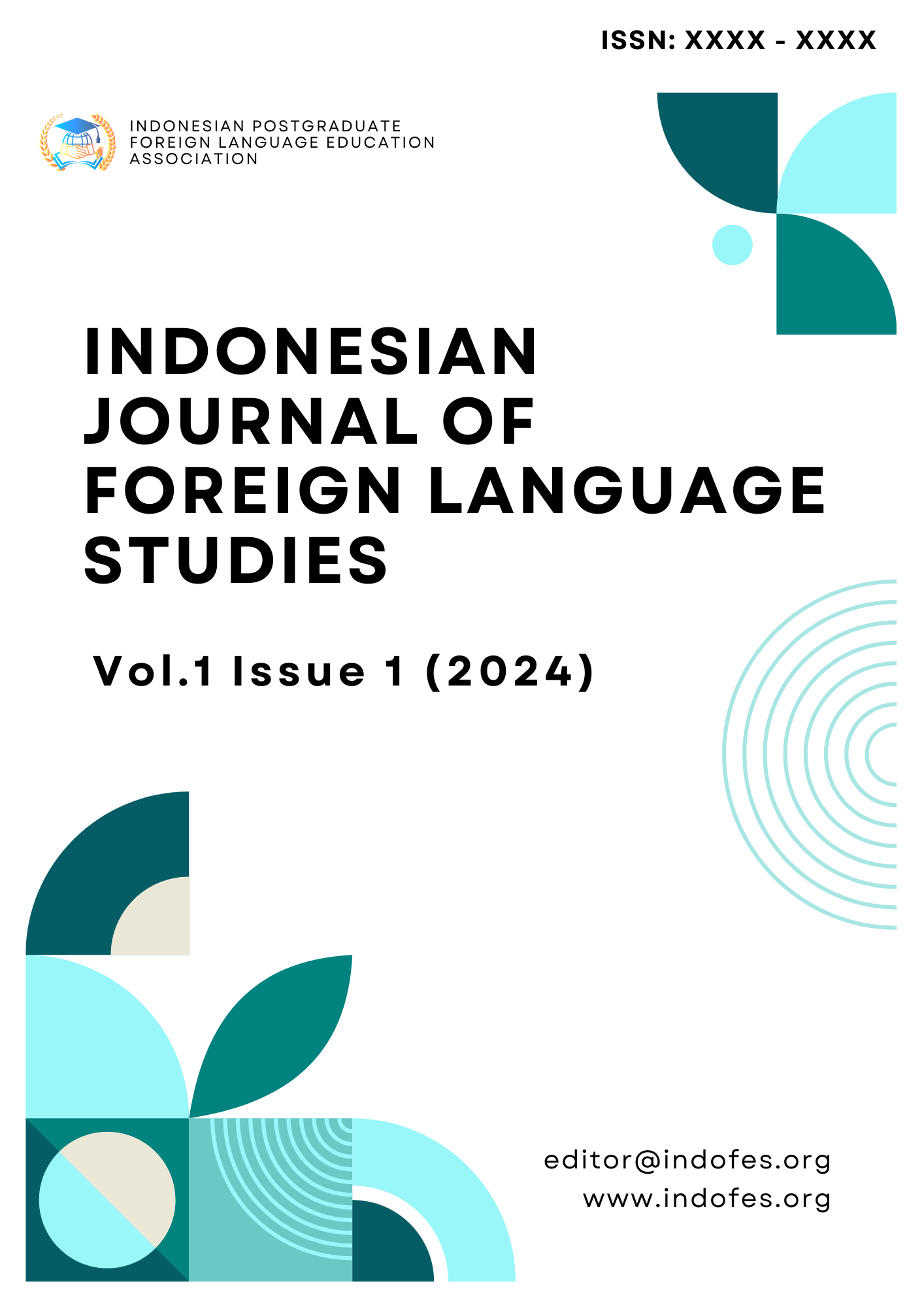Students' Perception toward Chat PDF AI Applied in Critical Reading Course
Keywords:
Chat Pdf AI, Critical Reading, Innovation of technology, PerceptionAbstract
Critical reading skills are central to academic achievement since they afford students one capacity to decipher and evaluate texts efficiently. With the entering of Artificial Intelligence (AI) in the education system, new tools have been developed to help in this process, one of which is Chat PDF AI. This qualitative research focuses on the Students at the English Education Department Dwijendra University and their understanding of critical reading courses with the help of Chat PDF AI. The objectives of this study are: to assess the indications of Chat PDF AI on students’ attitude, motivation, and comprehension in critical reading. To achieve the following objectives, a mixed-methods, sequential, explanatory design as highlighted by Creswell, was used. 15 students participated in the study and questionnaires involving structured interviews were used to gather data. The numerical data collected from the questionnaires were computed using descriptive statistics to compare the results for the different variables while the interviews offered more information about the students’ experience and perception regarding the implementation of the ergonomic computer workstations. The findings show that most of the students had a positive perception of chat PDF AI. In detail, 86,7% respondents talked about the improvement in the attitude towards the critical reading because of utilizing the tool; 66,7% respondents stated about their increased motivation as the tool is interactive. According to the qualitative data, the interviewees asserted and supported these discoveries by explaining that Chat PDF AI enhanced the entertaining and interactive attributes of reading tasks, thus making them less monotonous while enabling students to interact in a more productive manner in the learning process. Therefore, Chat PDF AI can be regarded as beneficial in the educational process both impacting the students’ attitudes and their motivation towards critical reading. Thus, although the study’s results appear positive, further research using more significant and diverse groups of participants is required to replicate these outcomes and examine AI tools’ sustained effects on the learners’ performances and critical reading skills.
References
AbuSahyon, A. S. E. (2023). AI-driven technology and chatbots as tools for enhancing English language learning in the context of second language acquisition: A review study. International Journal of Membrane Science and Technology, 10(1), 1209–1223. https://doi.org/10.15379/ijmst.v10i1.2829
Ahn, J. S., Ebrahimian, S., McDermott, S., Lee, S.-H., Naccarato, L., Capua, J. F. D., Wu, M., Zhang, E. W., Muse, V. V, Miller, B. F., Sabzalipour, F., Bizzo, B. C., Dreyer, K. J., Kaviani, P., Digumarthy, S. R., & Kalra, M. K. (2022). Association of artificial intelligence–Aided chest radiograph interpretation with reader performance and efficiency. Jama Network Open, 5(8), e2229289. https://doi.org/10.1001/jamanetworkopen.2022.29289
Al Roomy, M. A. (2022). Investigating the effects of critical reading skills on students’ reading comprehension. Arab World English Journal, 13(1), 366–381. https://doi.org/https://dx.doi.org/10.24093/awej/vol13no1.24
Arifin, S. (2020). The role of critical reading to promote students’ critical thinking and reading comprehension. Jurnal Pendidikan Dan Pengajaran, 53(3), 318–326. https://doi.org/https://dx.doi.org/10.23887/jpp.v53i1.
Babashamasi, P. (2022). The effect of teaching metacognitive reading strategies on the critical thinking skills of undergraduate students. International Journal of Applied Linguistics & English Literature, 11(2), 65–71. https://doi.org/10.7575/aiac.ijalel.v.11n.2p.65
Baird, H. S., Lopresti, D., Davison, B. D., & Pottenger, W. M. (2004). Robust document image understanding technologies. Proceedings of the 1st ACM Workshop on Hardcopy Document Processing, 9–14.
Bearman, M., & Ajjawi, R. (2023). Learning to work with the black box: Pedagogy for a world with artificial intelligence. British Journal of Educational Technology, 54(5), 1160–1173. https://doi.org/10.1111/bjet.13337
Davis, F. D. (1989). Perceived usefulness, perceived ease of use, and user acceptance of information technology. MIS Quarterly, 13(3), 319–340.
Dewi, V. K. (2024). Exploring the students’ perceptions of the integration of web-based and non-web-based ICT in ELT at the vocational high school in Indonesia. Journal on English as a Foreign Language, 14(1), 285–315. https://doi.org/10.23971/jefl.v14i1.7818
Duong, T. (2024). The effects of an artificial intelligence voice chatbot on improving Vietnamese undergraduate students’ English speaking skills. International Journal of Learning Teaching and Educational Research, 23(3), 293–321. https://doi.org/10.26803/ijlter.23.3.15
Hazaymeh, W. A. (2024). EFL instructors’ perspective on using AI applications in English as a foreign language teaching and learning. Emerging Science Journal, 8, 73–87. https://doi.org/10.28991/esj-2024-sied1-05
Huynh-The, T., Pham, Q.-V., Pham, X.-Q., Nguyen, T. T., Han, Z., & Kim, D.-S. (2023). Artificial intelligence for the metaverse: A survey. Engineering Applications of Artificial Intelligence, 117, 105581.
Jonatan, V., & Igor, A.-A. (2023). Creation of a chatbot based on natural language proccesing for whatsapp. ArXiv Preprint ArXiv:2310.10675, 12(2), 11–24.
Kemelbekova, Z. (2024). AI in teaching english as a foreign language: Effectiveness and prospects in Kazakh higher education. Xlinguae, 17(1), 69–83. https://doi.org/10.18355/xl.2024.17.01.05
Leander, K. M., & Burriss, S. K. (2020). Critical literacy for a posthuman world: When people read, and become, with machines. British Journal of Educational Technology, 51(4), 1262–1276. https://doi.org/10.1111/bjet.12924
Lee, Y.-J. (2024). University students’ perceptions of artificial intelligence-based tools for English writing courses. Online Journal of Communication and Media Technologies, 14(1), e202412. https://doi.org/10.30935/ojcmt/14195
McCauley, C. (2020). The Essence of Hate and Love. https://doi.org/10.1037/0000180-003
Miles, M. B., Huberman, A. M., & Saldaña, J. (2014). Qualitative data analysis: A methods sourcebook. 3rd. Thousand Oaks, CA: Sage.
Mohseni Takaloo, N., & Ahmadi, M. R. (2017). The effect of learners’ motivation on their reading comprehension skill: A literature review. International Journal of Research in English Education, 2(3), 10–21. https://doi.org/dx.doi.org/10.18869/acadpub.ijree.2.3.10
Moulieswaran, N., & Kumar N S, P. (2023). Investigating ESL learners’ perception and problem towards Artificial Intelligence (AI) -Assisted English language learning and teaching. World Journal of English Language, 13(5), 290. https://doi.org/10.5430/wjel.v13n5p290
Moybeka, A. M. S. (2023). Artificial intelligence and English classroom: The implications of AI toward EFL students’ motivation. Edumaspul - Jurnal Pendidikan, 7(2), 2444–2454. https://doi.org/10.33487/edumaspul.v7i2.6669
Murray, M. C., Pérez, J., & Fluker, J. (2022). Digital literacy in the core: The emerging higher education landscape. Issues in Informing Science and Information Technology, 19, 1–13.
Muslimin, A. I. (2024). Evaluating cami AI across SMAR stages: Students’ achievement and perceptions in EFL writing instruction. Online Learning, 28(2). https://doi.org/10.24059/olj.v28i2.4246
Pereira, G. K. R., & Moreschi, B. (2019). Ways of seeing with computer vision: artificial intelligence and institutional critique. https://doi.org/10.33767/osf.io/nv9z2
Radanliev, P., Roure, D. D., Maple, C., & Ani, U. (2021). Methodology for integrating artificial intelligence in healthcare systems: Learning from covid-19 to prepare for disease X. Ai and Ethics, 2(4), 623–630. https://doi.org/10.1007/s43681-021-00111-x
Remizantseva, K., & Ablyazov, T. (2019). Generation Z and digital tools in teaching foreign languages BT. Proceedings of the International Conference on Digital Technologies in Logistics and Infrastructure (ICDTLI 2019), 341–347. https://doi.org/10.2991/icdtli-19.2019.60
Rini, T. A. (2018). Creating critical literacy skills for young learners at primary school. Proceedings of the 1st International Conference on Early Childhood and Primary Education (ECPE 2018), 230–235. https://doi.org/10.2991/ecpe-18.2018.51
Rojalai, A., Susaie, J. S., Balaraman, L., Manoharan, S. R., Mustafa, Z., & Hashim, H. (2021). Language learning strategies used for enhancing reading skills among Year 6 pupils of a primary school in Selangor. International Journal of Academic Research in Business and Social Sciences, 11(6), 1186–1195. https://doi.org/10.6007/IJARBSS/v11-i6/10044
Sharadgah, T. A., & Sa’di, R. A. (2022). A systematic review of research on the use of artificial intelligence in English language teaching and learning (2015-2021): What are the current effects? Journal of Information Technology Education Research, 21, 337–377. https://doi.org/10.28945/4999
Sheng, B. (2023). Research on the innovation of English teaching mode based on artificial intelligence. Frontiers in Education Technology, 6(4), p106. https://doi.org/10.22158/fet.v6n4p106
Sumakul, D. T. Y. G., Hamied, F. A., & Sukyadi, D. (2022). Students’ perceptions of the use of AI in a writing class. 67th TEFLIN International Virtual Conference & the 9th ICOELT 2021 (TEFLIN ICOELT 2021) Students’, 52–57. https://doi.org/10.2991/assehr.k.220201.009
Tanksley, T. C. (2024). “ We ’ re changing the system with this one ” : Black students using critical race algorithmic literacies to subvert and survive AI-mediated racism in school. English Teaching: Practice & Critique, 1–21. https://doi.org/10.1108/ETPC-08-2023-0102
Downloads
Published
How to Cite
Issue
Section
License
Copyright (c) 2024 Author

This work is licensed under a Creative Commons Attribution-ShareAlike 4.0 International License.
You are free to:
- Share — copy and redistribute the material in any medium or format for any purpose, even commercially.
- Adapt — remix, transform, and build upon the material for any purpose, even commercially.
- The licensor cannot revoke these freedoms as long as you follow the license terms.
Under the following terms:
- Attribution — You must give appropriate credit , provide a link to the license, and indicate if changes were made . You may do so in any reasonable manner, but not in any way that suggests the licensor endorses you or your use.
- ShareAlike — If you remix, transform, or build upon the material, you must distribute your contributions under the same license as the original.
- No additional restrictions — You may not apply legal terms or technological measures that legally restrict others from doing anything the license permits.
Notices:
You do not have to comply with the license for elements of the material in the public domain or where your use is permitted by an applicable exception or limitation .
No warranties are given. The license may not give you all of the permissions necessary for your intended use. For example, other rights such as publicity, privacy, or moral rights may limit how you use the material.








